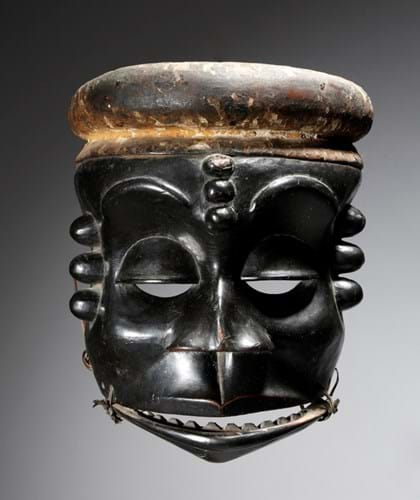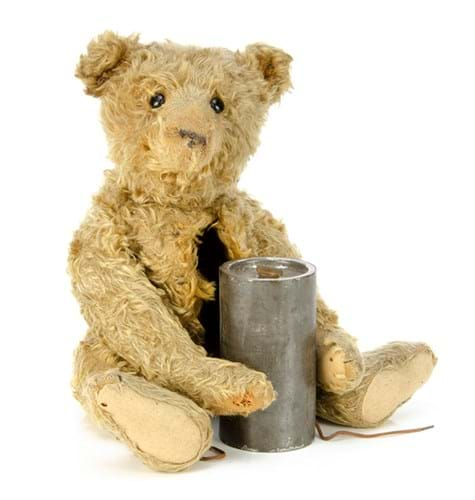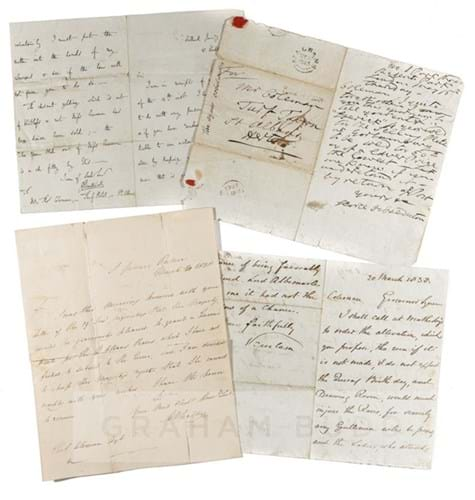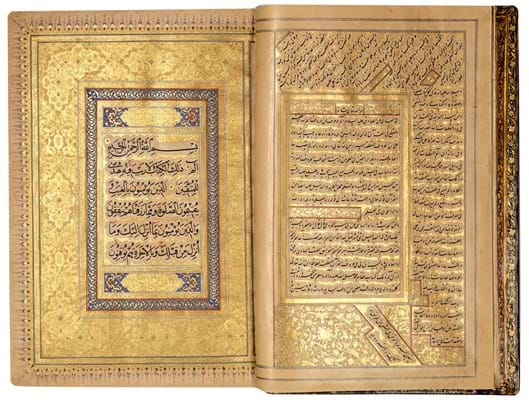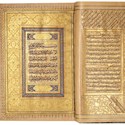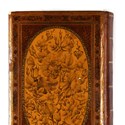1. Ibibio mask – £30,000
Among the best performing lots in the tribal art sale at Woolley & Wallis in Salisbury on June 8 was this Ibibio mask (idiok ekpo). Carved in wood, the stylised face is painted black with white painted teeth within an articulated jaw.
It was thought to be late 19th or early 20th century in date: the British Museum has a mask from the same group it acquired in 1899.
Expressive idiok expo represent spirits and were used in the dances of the Ibibio, who live east of the Niger Delta in south-east Nigeria. Finely carved with a particularly ‘strong’ face, this 10in (25cm) example was guided at £600-800 but sold at £30,000.
It came for sale from the estate of Peter Mactaggart (1931-2020) whose family ran an antiques shop in Welwyn, Hertfordshire from the late 1940's to the early 1970s.
2. Steiff ‘hot-water’ bottle bear – £6000
Some of the zest has gone out of the teddy bear market since the crazy days of two decades years ago.
Leading the sale at Special Auction Services in Newbury on June 8 was a very rare Steiff ‘hot-water’ bottle bear c.1907. It retained the original tin canister with screw cap at each end that, filled with water, could be inserted into the bear and secured by a lace fastening and was sold with an old leather suitcase in which it had been stored for many years. A tag and written inside read: ‘Mrs Marshall and E.J. Marshall, 47 Croft Lane, Bromborough, Wirral, Cheshire’.
The vendor had inherited it and two other toys from his grandmother.
It is estimated that between 1907 and 1914 only 90 of these rarities were made at Steiff. They may have been expensive to produce and priced too highly compared to standard bears. Specialist Daniel Agnew had sold three in the past: the first at Christie's South Kensington in 2002 (£28,000), the second (also at CSK) made £26,000 in 2006 and was later resold for £16,200, while more recently SAS sold an example in 2014 for £12,500.
The most recent example was estimated at £6000-8000 and got away at the lower end of expectations.
3. Caravaggisti Old Master – £345,000
This painting depicting the Old Testament subject of Lot and His Daughters is an autograph work by the Caravaggisti Giovanni Francesco Guerrieri (1589-1655/9). In a private collection in Spain since the 19th century, at Dorotheum’s Old Master Paintings auction on June 8, it doubled expectations to achieved a record €380,000 (£345,000).
The oil is one of several treatments of the subject by Guerrieri (one is in the Manchester Art Gallery). This particular composition relates to two other versions in Rome, one in the Galleria Borghese (commissioned by Marcantonio Borghese in 1617), the other in the Galleria Doria Pamphilj, although at 4ft 9in x 6ft 6in (1.47 x 1.97m) this one is a little larger than both.
All three versions of this composition depict the dragon symbol of the Borghese family in the ornamental handle of the gilt metal pitcher from which one of Lot’s daughters pours wine.
Italian art historian Andrea G. De Marchi, helped catalogue the picture and deemed it one of the artist’s better works with perhaps a degree of studio intervention.
4. Letters to the ‘father of steeplechasing’ – £1000
These pages are from archive relating to the early years of steeplechasing: a collection of 32 handwritten letters from eminent members of aristocracy and ‘the Turf’ to trainer and entrepreneur Thomas Coleman (1796-1877).
‘Tommy’ Coleman, who worked as a stable lad for Lord Arthur Wellesley, future Duke of Wellington, was landlord of the Turf Hotel on Chequer Street in St Albans when visiting officers of the Household Cavalry suggested he organise a steeplechase.
The first of eight runnings of the four-mile event took place in 1830 provided the inspiration for Aintree's Grand National. A certain Captain Becher, who finished second in the St Albans race in 1830, rode in that first Grand National and fell at the fence which today bears his name, Becher’s Brook.
The letters to the ‘father of steeplechasing’ date from between 1827 and 1874 and include correspondence on racing-related topics and horse sales with Lord George Bentinck, 'Squire' Osbaleston, John Gully, Lord Verulam, Lord Grosvenor and the Marquess of Titchfield.
Offered together as part of the sporting memorabilia sale at Graham Budd in London on June 7, the lot got away just below estimate at £1000.
5. Safavid Quran – £363,600
This illuminated Safavid Quran, possibly produced in Shiraz during the second half of the 16th century, includes the names of two important Persian artists of the 19th century. It appears to have been refurbished by Muhammad ‘Ali ibn Mulla Ahmad Qari Isfahani, probably the master calligrapher of that name who received the title Sultan al-Kuttab (king of scribes) during the long reign of Nasir al-Din Shah (1848-96).
The lacquer binding with floral decoration c.1880 is signed for the celebrated lacquer painter Fathullah Shirazi and has the name of the owner Aqa Mirza Mahmud Khan.
It was offered for sale at Dutch firm Oriental Art Auction in Hattem on June 8 with a guide of €120,000-150,000 but found a buyer via thesaleroom.com at €400,000 (£363,600).


